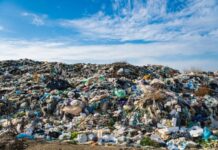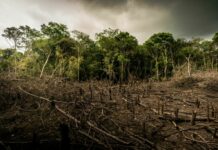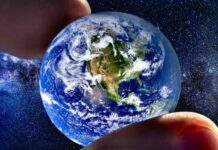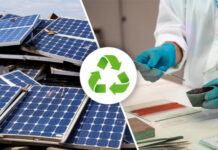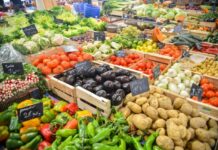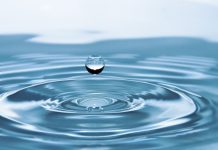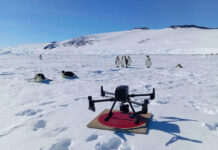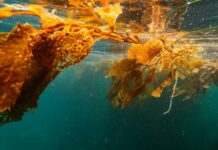
Plastic permeates every corner of the Planet: not only an extremely useful product on which we now depend, but, as WWF reminds us today, a systemic threat not only to the environment, but also to human health. The organisation is taking advantage of today’s anniversary to launch, as part of its Our Future campaign, the document ‘Beyond Plastic: The Hidden Burden of Pollution’, an analysis of the risks linked to plastic, including those to human health that have now been scientifically established, accompanied by a collection of concrete solutions to a problem that is assuming increasingly worrying proportions. Since its diffusion on a large scale in the 1950s, plastic has stood out for its lightness, resistance and cheapness, but these same characteristics have also determined its enormous negative impact: of more than 9 billion tonnes produced to date, only a fraction has been recycled. A production that shows no sign of diminishing, with more than 410 million tonnes, mainly from fossil fuels, coming onto the market every year. The consequences are obvious: plastic accounts for 80% of the waste dispersed in the marine and coastal environment of the Mediterranean, of which more than half is single-use plastic. This is particularly worrying considering that the Mediterranean Sea is a hotspot for marine biodiversity, hosting up to 18% of the world’s marine species. In recent years, alongside environmental alarm, concern has also grown over the health implications of the presence of plastics in the environment, particularly in the form of micro- and nanoplastics (MNP).
Numerous scientific evidences have confirmed that these particles – arising from the fragmentation of plastic objects or intentionally produced in micro or nano form – accumulate in natural ecosystems, but do not stop there. It is precisely their infinitesimal size and ability to infiltrate all environmental compartments – water, air, soil – that make MNPs capable of entering the food chain and penetrating living organisms, including humans. The main routes of exposure for humans are ingestion, inhalation and, to a lesser extent, dermal absorption. Numerous studies have detected MNP in widely consumed foods such as salt, honey, meat, fruit, vegetables and, in particular, in fish products. Current estimates suggest that an individual may ingest up to 52,000 plastic particles per year. Inhalation is also an important factor in human intake of MNPs: in one cubic metre of air there can be up to 5,700 MNPs and an individual can inhale up to 22 million of these tiny fragments in a year. After ingestion, MNPs can cross biological barriers and distribute throughout the body. They have been detected in urine, faeces, seminal fluid, breast milk, but also in lungs, liver, kidneys, colon, placenta, ovaries, heart and even in the brain, where the blood-brain barrier was thought to offer sufficient protection.
Recent studies have found concentrations of MNP in the brain of up to almost 7 grams, the equivalent of the weight of a biro, with levels up to 30 times higher than in other organs, such as the liver and kidneys. Although there is still no definitive causal relationship between the presence of MNP and specific diseases, epidemiological and experimental evidence is growing. A recent study conducted in Italy indicates possible cause-effect relationships with cardiovascular diseases, such as heart attack and stroke. In the neurological field, nanoplastics could facilitate the pathological aggregation of proteins, a process involved in Alzheimer’s and other forms of neurodegeneration. Other studies suggest an impact on reproductive and foetal health, with reduced intrauterine growth associated with the presence of microplastics in the placenta. Of further concern are the chemicals contained in or associated with plastics – such as bisphenol A, phthalates and flame retardants, heavy metals – many of which are known to affect the endocrine system, cardiovascular system and metabolism. The interaction between plastic particles and chemical additives amplifies the complexity of the health risk and impact on biodiversity. ‘We can no longer consider plastics just an environmental problem: the risks to human health are real, systemic and partly still unknown. A global, coordinated and ambitious response is needed,’ says Eva Alessi, WWF Italy’s Sustainability Manager. ’Scientific evidence on the presence of micro- and nanoplastics in the human body is accumulating rapidly, and tells us of daily, invisible and pervasive exposure. Although many uncertainties remain about biological mechanisms and risk thresholds, the precautionary principle demands immediate action. To ignore these signals today is to accept a growing and unpredictable health and environmental cost for the future.’
Faced with this picture, the WWF has long since launched the global initiative ‘No Plastic in Nature’, with the goal of stopping the release of plastic into the environment by 2030. The approach is multilevel and involves everyone: companies, governments, citizens, and anyone who can do their bit to reduce the production of plastic, especially the most harmful and unnecessary kind. The aim is to redesign products to make them safely reusable, easily recyclable and made from recycled, natural and safer materials. In addition, large-scale solutions for reusing and recycling plastics are to be developed. Governments are called upon to take a decisive step towards the adoption of a legally binding global treaty against plastic pollution, ahead of the new UN negotiating session (INC-5.2) to be held in Geneva from 5 to 14 August 2025, after last year’s failed agreement. Italy is asked to play an active role in the international negotiations, to adopt policies consistent with European and global targets, and to strengthen domestic measures, including the extension of separate waste collection to sectors with high plastic consumption, the implementation of the Plastic Tax and the full application of the Salvamare Law. Companies have the power to act autonomously towards reducing unnecessary plastics, designing products more suitable for reuse and recycling, increasing the use of recycled materials, and being transparent about how they are produced, eliminating or replacing the most toxic and hazardous substances. Citizens have the opportunity to reduce their consumption of plastic products and packaging, through conscious purchasing choices, and are responsible for managing their own separate waste collection at home correctly. Finally, cities and municipalities can also actively participate, with concrete actions to prevent and monitor plastic dispersion in the environment, for example by joining the international Plastic Smart Cities programme. The problem of plastics can no longer be considered just an environmental issue. Growing scientific evidence points to potential systemic effects on human health and biodiversity that require urgent, coordinated and structural action. Only through the joint commitment of institutions, businesses, local communities and citizens will it be possible to effectively tackle this crisis and protect the well-being of future generations.

